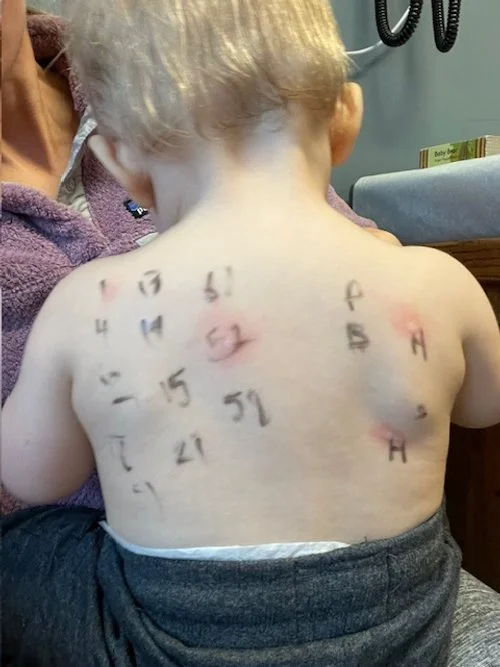What Is a Food Allergy?
A food allergy is a medical condition where the body’s immune system reacts to a food as if it were a threat — even though it’s not harmful to most people. This reaction can range from mild to life-threatening.
In a child with a food allergy, their immune system releases chemicals like histamine, which causes allergy symptoms such as hives, swelling, and difficulty breathing.
Unlike food intolerances (which are digestive issues), food allergies involve the immune system and can be dangerous.
Common Food Allergy Symptoms in Children
Symptoms of food allergy typically appear within seconds to two hours after eating. Look out for:
Skin symptoms:
Hives or welts
Swelling (face, lips, tongue)
Redness or itching
Digestive symptoms:
Vomiting
Diarrhea
Abdominal pain
Respiratory symptoms:
Cough
Wheezing
Trouble breathing
Tightness in throat
Cardiovascular symptoms:
Pale or blue skin
Dizziness
Fainting
The most serious reaction is anaphylaxis, a rapid, severe reaction that is life-threatening and requires immediate treatment with epinephrine.
What to Do If You Suspect a Food Allergy
If your child has experienced symptoms that could be allergic:
Track symptoms using a symptom tracker, get your FREE Food Allergy Professor’s Symptom Tracker here
Avoid the suspected food until you’ve seen a specialist
Schedule an appointment with an allergist for proper testing
Seek consultation to guide you through this process and gain a better understanding of food allergies
Being a food allergy parent can feel scary and overwhelming, especially in the beginning. But with the right information and support, you can manage it confidently.
Understanding the basics of food allergy is just the beginning. There’s so much more to learn — from how reactions happen in the body, to navigating the healthcare system, to making safe choices at school, daycare, and everywhere in between.
I’m developing a step-by-step course for parents like you, one that walks you through everything you need to know to feel empowered, not panicked, as you manage your child’s food allergy. Sign up for email updates to be the first to know when the course launches!



Learn how to tell the difference between food allergies and intolerances, what symptoms to look for, and how to protect your child with confidence and clarity.